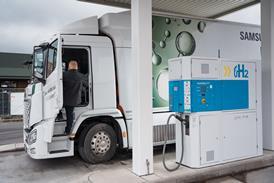The Worldwide Harmonised Light Vehicle Test Procedure (WLTP) was implemented in September 2017, replacing the outdated NEDC test for determining the official fuel consumption and CO2 emissions of new cars. Since September 2018, it has been mandatory for all new cars.

WLTP aims to offer a more accurate representation of real-world fuel consumption and co2 figures, providing model-specific values at the point of sale. Unlike the previous NEDC process, WLTP utilises real-driving data gathered from various regions worldwide to better reflect everyday driving profiles.
The WLTP driving cycle consists of four parts with different average speeds: low, medium, high, and extra high. Each part includes various driving phases, stops, acceleration, and braking phases. This approach allows for testing each powertrain configuration of a certain car type, from the lightest to the heaviest version, to provide comprehensive data.
The transition to WLTP was welcomed by the EU automobile industry, as it addresses the limitations of the outdated NEDC test and offers more accurate and realistic results. However, while WLTP serves as a global test cycle, its implementation may vary across different regions based on specific road traffic laws and requirements.
For consumers, WLTP provides improved confidence in fuel economy, CO2 emissions, and electric range values presented for new cars. Although the figures obtained under WLTP are closer to real-world results compared to NEDC, it’s important to note that actual fuel consumption may vary due to factors such as driving styles, vehicle accessories, and additional weight.
To assist the automotive industry and consumers in adapting to WLTP data, Zemo Partnership has published guidance notes outlining recommendations for presenting WLTP and NEDC equivalent figures in promotional material and car buyer information.
Supporting documents
Click link to download and view these filesLowCVP WLTP Automotive Industry Guide - 19 June 2018 (1)
PDF, FileSizeText 1.69 mbLowCVP WLTP Automotive Industry Guide - 19 June 2018
PDF, FileSizeText 1.69 mb


















